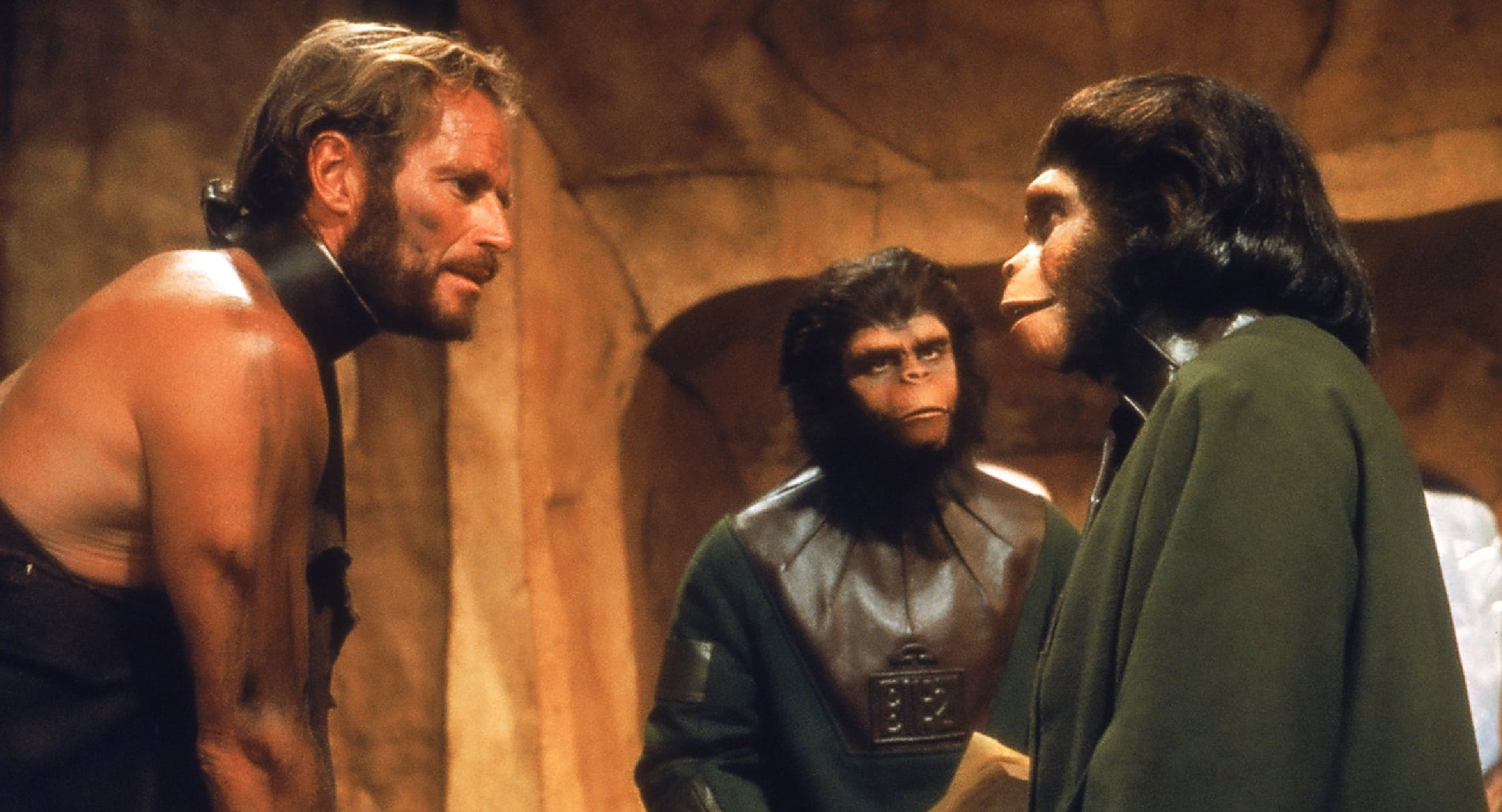Planet of the Apes – Film Review
Published May 2, 2024

The 1968 film Planet of the Apes, directed by Franklin J. Schaffner and based on Pierre Boulle’s 1963 novel, is often hailed as a landmark in science fiction cinema. The film combines thought-provoking social commentary, groundbreaking makeup effects, and a memorable twist ending. However, despite its enduring legacy and numerous strengths, the film also has notable flaws that prevent it from achieving true greatness.
The story follows astronaut George Taylor (Charlton Heston) and his crew as they crash-land on a mysterious planet in the distant future. As they explore, they discover a society where intelligent apes have evolved to become the dominant species, and humans are mute, primitive creatures. Captured by the apes, Taylor must navigate this topsy-turvy world, encountering various characters such as the sympathetic chimpanzee scientists Zira (Kim Hunter) and Cornelius (Roddy McDowall), and the antagonistic orangutan Dr. Zaius (Maurice Evans). The film culminates in one of cinema’s most iconic twists: the revelation that the “alien” planet is actually a post-apocalyptic Earth.
Planet of the Apes is rich with allegorical content, addressing themes such as racial conflict, the dangers of nuclear war, and the folly of human hubris. The reversal of roles between humans and apes serves as a powerful critique of contemporary society, forcing the audience to confront uncomfortable truths about their own world. The film’s exploration of these themes remains relevant, providing a compelling reason for its continued study and appreciation.
The makeup effects, overseen by John Chambers, were revolutionary for their time and remain impressive even by modern standards. The detailed and expressive ape prosthetics allowed actors to deliver nuanced performances, bringing the simian characters to life in a believable manner. The film’s visual effects, while dated, still manage to convey the desolate and mysterious nature of the planet, adding to the overall atmosphere.
Charlton Heston delivers a powerful performance as Taylor, embodying the rugged individualism and defiant spirit of his character. Kim Hunter and Roddy McDowall also shine as Zira and Cornelius, bringing warmth and depth to their roles. Maurice Evans’ Dr. Zaius is a standout, providing a complex antagonist whose motivations are both understandable and morally ambiguous.
The film is peppered with memorable moments, from the haunting opening sequence in the Forbidden Zone to Taylor’s defiant cry of “Get your stinking paws off me, you damned dirty ape!” The final scene, with Taylor discovering the ruined Statue of Liberty, remains one of the most shocking and effective endings in film history, cementing its place in popular culture.
While the film’s beginning is gripping and its ending unforgettable, the middle section tends to drag. The sequences involving Taylor’s capture and initial interactions with the apes, while necessary for world-building, can feel repetitive and slow. This uneven pacing detracts from the film’s overall impact, making certain sections a chore to sit through.
Although the primary characters are well-acted, they often lack depth and complexity. Taylor, in particular, is portrayed as a one-dimensional figure whose primary trait is his defiance. The film touches on his backstory and motivations only superficially, which can make it difficult for the audience to fully invest in his journey. Similarly, the supporting human characters, such as Taylor’s fellow astronauts, are underdeveloped and quickly forgotten.
At times, the dialogue can be overly simplistic and didactic, serving more as a vehicle for the film’s messages than as natural conversation. This can make some scenes feel stilted and preachy, detracting from the overall immersion. The heavy-handedness with which the film delivers its social commentary, while effective in some instances, can also come across as overly blunt.
Viewed through a modern lens, certain aspects of the film’s depiction of race and gender are problematic. The film’s treatment of female characters, for instance, is often limited to traditional roles, with little room for complexity or agency. Additionally, the use of racial allegory, while bold, can sometimes feel uncomfortable and dated, reflecting the social attitudes of the time.
Planet of the Apes is undeniably a significant piece of cinema, both for its contributions to the science fiction genre and its enduring cultural impact. Its strengths lie in its thought-provoking themes, groundbreaking makeup effects, and memorable performances. However, the film is not without its flaws, including pacing issues, simplistic character development, and occasionally heavy-handed dialogue.
